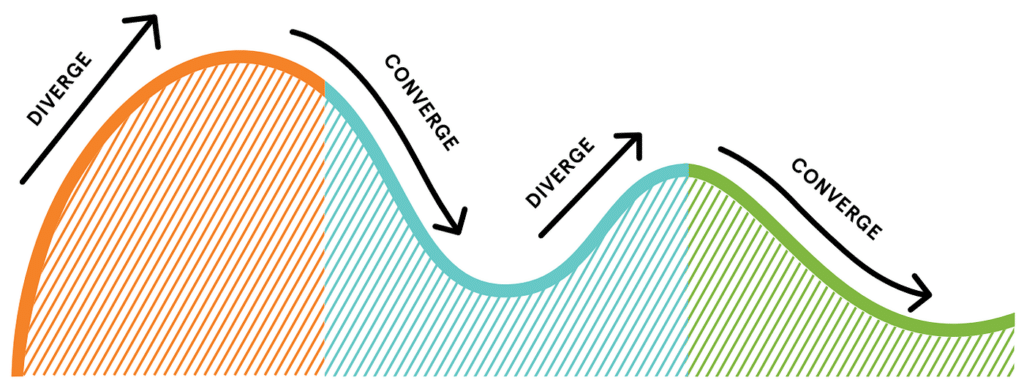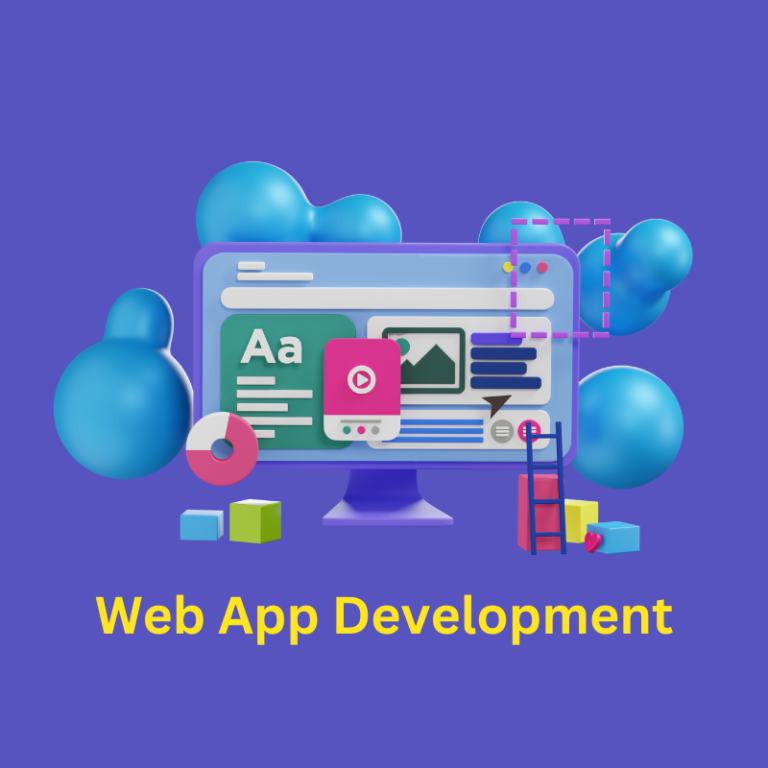Best Free Online Courses for Aspiring UX Designers
Are you looking to start your career as a UX designer? Then you have come to the right place!
User Experience Design, or UX design, is a crucial aspect of product design and development. It involves designing user interfaces and interactions that provide a positive and satisfying experience to the end user. UX design is a multidisciplinary field that combines elements of psychology, design, and technology to create user experience-centred products that meet the needs and preferences of the various target users and audiences.
If you are interested in becoming a UX designer or seeking to improve your UX design skills, taking an online course can be an excellent way to get started.
There are many free online UX designer courses available that cover various aspects of UX design, from the basics of user research, design ideas and prototyping to more advanced topics like designing for conversion and advanced interaction design.
In this article, we will explore the best free online courses for aspiring UX designers. We have divided the courses into three categories: beginner, intermediate, and advanced, to cater to learners at different levels of experience.
By the end of this article, you will have a comprehensive list of free online courses that can help you build your skills and knowledge in UX design and take the first step towards a career in this exciting field
Table of Contents
- UX Designer Courses for Beginners
- Intermediate Level UX Designer Courses
- Advanced Level UX Designer Courses
- Final Thoughts
- Frequently Asked Questions
UX Designer Courses for Beginners
Here are the top 3 courses for you if you want to start your journey as a professional UX designer.
1) UX Design Fundamentals by Google

The “UX Design Fundamentals” course by Google is a free online course that provides a comprehensive introduction to UX design. It covers the basics of UX design, including user research, UX research, information architecture, graphic design, interaction, user interface design, user flows, and visual design.
The designers have designed the course for beginners, providing them with a foundation to start creating user-centred designs throughout the entire user journey.
Key Topics Covered
The course covers a wide range of topics related to UX design, including:
- Understanding the importance of UX design
- Conducting user research
- Creating user personas
- Designing information architecture and navigation
- Creating wireframes and prototypes
- Conducting usability testing
- Visual design principles and best practices
Course Length And Format
The course consists of six modules. Learners can expect to spend around 10 hours in total to complete the course. The course is entirely online, and learners can access the course materials from anywhere with an Internet connection.
Course Benefits
The course is an excellent resource for beginners who want to learn the fundamentals of UX design. It provides a comprehensive introduction to the key concepts and principles of UX design. It also teaches learners how to apply them to create user-centred designs.
Google, a leading tech company, has created the course to provide learners with insights into industry-standard design practices. Finally, learners who complete the course will receive a certificate of completion from Google. This can be a valuable addition to the portfolio or resume of UX designers.
2) Intro to UX Design by Designlab

The “Intro to UX Design” course by Designlab is a free online course that provides an introduction to UX design. It covers the basics of UX design, including user research, design thinking, wireframing, and prototyping.
The designers have designed the course for beginners to provide them with a foundation to start creating user-centred designs. It focuses on multiple skills, including basic UX design principles, along with the ability to plan and conduct user testing, surveys, and formal evaluations. It also focuses on iterating your work based on user testing data and qualitative user feedback
Key Topics Covered
The course covers several essential topics related to UX design, including:
- Understanding user needs and behaviours
- Conducting user research
- Applying design thinking principles to the design process
- Creating user personas and user journeys
- Designing wireframes and prototypes
- Conducting usability testing
Course Lenght And Format
There are eight modules in the course, and learners can complete it at their convenience since it is self-paced. Learners can complete the course at their convenience and can expect to spend around 10 hours in total to complete the course.
The course is entirely online and includes a mix of video lectures, readings, and hands-on design exercises.
Course Benefits
The course is an excellent resource for beginners who want to learn the fundamentals of UX design. It provides a comprehensive introduction to the key concepts and principles of UX design and teaches learners how to apply them to create user-centred designs.
Designlab, a leading online design education platform, has created the course to provide learners with insights into industry-standard design practices. Finally, learners who complete the course will receive a certificate of completion from Designlab, which can be a valuable addition to their portfolio or resume.
3) Human-Centred Design: An Introduction by IDEO

The “Human-Centered Design: An Introduction” course by IDEO is a free online course that provides an introduction to human-centred design. It covers the basics of human-centred design, including user research, prototyping, and testing.
The designers have created the course for beginners to establish a foundation for them to start creating human-centred designs.
Key Topics Covered
The course covers several essential topics related to human-centred design, including:
- Understanding user needs and behaviours
- Conducting user research
- Creating user personas and scenarios
- Ideation and prototyping
- Testing and iteration
Course Length And Format
The course is self-paced and consists of six modules. Learners can complete the course at their convenience and can expect to spend around 6-8 hours in total to complete the course. The course is entirely online and includes a mix of video lectures, readings, and hands-on design exercises.
Course Benefits
The course is an excellent resource for beginners who want to learn the fundamentals of human-centred design. It provides a comprehensive introduction to the key concepts and principles of human-centred design and teaches learners how to apply them to create user-centred designs.
Additionally, the course is created by IDEO, a leading design and innovation firm, and provides learners with insights into industry-standard design practices. Finally, learners who complete the course will receive a certificate of completion from IDEO, which can be a valuable addition to their portfolio or resume.
Intermediate UX Designer Courses
This section includes three courses curated for people who have a basic understanding of the design process and who want to polish their UX skills.
1) UX Design – From Wireframe to Prototype by Udacity

Udacity has designed the UX Design – From Wireframe to Prototype course to give students a comprehensive understanding of the UX design process.
Key Topics Covered
The course covers various topics related to UX design, including:
- Introduction to UX Design and the design process
- Understanding user needs and requirements
- Creating user personas and scenarios
- Sketching and wireframing
- Design principles and guidelines
- Creating interactive prototypes using tools such as Sketch, InVision, and Figma
- Usability testing and evaluation
Course Length And Format
The course is a self-paced online course, and students can complete it in their own time. The estimated time to complete the course is around 3 months, but this can vary depending on the individual’s learning speed and available time.
The course consists of video lectures, quizzes, and hands-on projects that students complete using design tools.
Course Benefits
Students gain practical skills and knowledge that the design industry highly seeks when they take the UX Design – From Wireframe to Prototype course. By the end of the course, students will have a strong understanding of the UX design process and will be able to create wireframes and prototypes using different tools and techniques.
Additionally, the course provides students with the opportunity to work on real-world projects and build a portfolio of design work that can be used to showcase their skills to potential employers.
2) Designing for Conversion by The Interaction Design Foundation

The Interaction Design Foundation has designed the Designing for Conversion course to assist students in comprehending how to create effective designs that transform website visitors into customers.
The course focuses on teaching students how to use design principles and techniques to create engaging user experiences that drive conversion.
Key Topics Covered
The course covers various topics related to designing for conversion, including:
- Understanding the psychology of user behaviour and decision-making
- Creating effective landing pages and calls-to-action
- Designing for mobile devices and responsive design
- Understanding the importance of content and copywriting
- Conducting user research and testing
- Analyzing and measuring conversion rates
Course Length And Format
The course is a self-paced online course, and students can complete it in their own time. The estimated time to complete the course is around 12 hours, but this can vary depending on the individual’s learning speed and available time. The course consists of video lectures, readings, quizzes, and hands-on projects that students complete using design tools.
Course Benefits
The Designing for Conversion course provides students with practical skills and knowledge that are highly sought after in the design industry. By the end of the course, students will have a strong understanding of how to create effective designs that drive conversion and will be able to apply this knowledge to real-world projects.
Additionally, the course provides students with the opportunity to earn a certificate from The Interaction Design Foundation, which can be used to showcase their skills to potential employers.
3) Interaction Design and Design Thinking by Coursera

The “Interaction Design and Design Thinking” course by Coursera is a free online course that provides an introduction to design thinking and interaction design.
It covers the basics of design thinking, including empathizing with users, defining the problem, ideating, prototyping, and testing. The designers created the course for beginners to provide a foundation for them to start creating user-centred designs.
Key Topics Covered
The course covers several essential topics related to interaction design and design thinking, including:
- Understanding the principles of design thinking
- Empathizing with users and defining the problem
- Ideation and prototyping
- Designing for interaction and user experience
- Conducting user research and testing
Course Length And Format
Learners can complete the course at their convenience and can expect to spend around 17 hours in total to complete the course. The course is entirely online and includes a mix of video lectures, readings, and hands-on design exercises.
Course Benefits
The course is an excellent resource for beginners who want to learn the fundamentals of design thinking and interaction design. It provides a comprehensive introduction to the key concepts and principles of design thinking and teaches learners how to apply them to create user-centred designs. Additionally, the course is created by Coursera, a leading online learning platform, and provides learners with insights into industry-standard design practices.
Finally, learners who complete the course will receive a certificate of completion from Coursera, which can be a valuable addition to their portfolio or resume.
Advanced UX Designer Courses
This course lists three top courses that can be helpful for professional UX designers to further polish their skills and advance their careers.
1) User Research and Design by edX

The User Research and Design course by edX is designed to help students understand the importance of user research in the design process.
The course focuses on teaching students how to conduct user research and apply the insights gained to design effective user experiences.
Key Topics Covered
The course covers various topics related to user research and design, including:
- Introduction to user research and design
- Understanding user needs and behaviours
- Conducting user interviews and surveys
- Analyzing and synthesizing user research data
- Creating user personas and scenarios
- Ideation and prototyping
- User testing and evaluation
Course Length And Format
The course is a self-paced online course, and students can complete it in their own time. The estimated time to complete the course is around 6 weeks, but this can vary depending on the individual’s learning speed and available time.
The course consists of video lectures, readings, quizzes, and hands-on projects that students complete using design tools.
Course Benefits
The User Research and Design course provides students with practical skills and knowledge that are highly sought after in the design industry. By the end of the course, students will have a strong understanding of how to conduct user research and apply the insights gained to design effective user experiences.
Additionally, the course provides students with the opportunity to earn a certificate from edX, which can be used to showcase their skills to potential employers. The course is also taught by industry experts and provides students with access to a global community of learners, which can be helpful for networking and career growth.
2) Advanced Interaction Design by The Interaction Design Foundation

The “Advanced Interaction Design” course by The Interaction Design Foundation is a free online course for a UX designer that provides an in-depth exploration of advanced topics in interaction design. The course covers various aspects of interaction design, including user experience, user-centred design, and designing for different platforms.
It is designed for intermediate to advanced learners who want to deepen their knowledge and skills in interaction design.
Key Topics Covered
The course covers several essential topics related to advanced interaction design, including:
- User experience design
- Designing for different platforms (web, mobile, etc.)
- Designing for accessibility and inclusion
- Design research methods
- Evaluating and testing designs
- Advanced design patterns and techniques
Course Length And Format
The course is self-paced and consists of 13 chapters. Learners can complete the course at their convenience and can expect to spend around 16 hours in total to complete the course. The course is entirely online and includes a mix of video lectures, readings, and hands-on design exercises.
Course Benefits
The course is an excellent resource for intermediate to advanced learners who want to deepen their knowledge and skills in interaction design. It provides a comprehensive exploration of the key concepts and principles of advanced interaction design and teaches learners how to apply them to create user-centred designs for different platforms.
Additionally, the course is created by The Interaction Design Foundation, a leading design education platform, and provides learners with access to a community of user experience designers and design experts. Finally, learners who complete the course will receive a certificate of completion from The Interaction Design Foundation, which can be a valuable addition to their portfolio or resume.
3) Designing the User Experience by Udacity

The Designing the User Experience course by Udacity is designed to help students understand the fundamentals of user-centred design.
The course focuses on teaching students how to create engaging user experiences by applying design thinking and design principles.
Key Topics Covered
The course covers various topics related to designing the user experience, including:
- Introduction to user-centred design and design thinking
- Understanding user needs and goals
- Creating user personas and scenarios
- Conducting user research and testing
- Information Architecture and content strategy
- Interaction design and prototyping
- Usability testing and evaluation
Course Length And Format
The course is a self-paced online course, and students can complete it in their own time. The estimated time to complete the course is around 3 months, but this can vary depending on the individual’s learning speed and available time.
The course consists of video lectures, quizzes, and hands-on projects that students complete using design tools.
Course Benefits
The Designing the User Experience course provides students with practical skills and knowledge that are highly sought after in the design industry. By the end of the course, students will have a strong understanding of how to create engaging user experiences by applying design thinking and design principles.
Additionally, the course provides students with the opportunity to work on real-world projects and build a portfolio of design work that can be used to showcase their skills to potential employers. The course is also taught by industry experts and provides students with access to a global community of learners, which can be helpful for networking and career growth.
Final Thoughts
In conclusion, there are many free online courses available for aspiring UX designer and interaction designer who wants to learn the fundamentals and advanced topics of interaction design.
These courses provide learners with a strong foundation of design thinking, user research, prototyping, and testing to create user-centred designs. Completing these courses can also help learners to build a portfolio and add valuable skills to their resumes.
From Google’s UX Design Fundamentals to the Advanced Interaction Design course by The Interaction Design Foundation, there are plenty of options to choose from depending on your level of experience and interests in visual design.
By taking advantage of these free resources, aspiring UX and interaction designers can gain the knowledge and skills needed to start a career as a UX designer in this exciting field.
Frequently Asked Questions
What is UX design?
UX design, or user experience design, is the process of designing digital products. These include websites and mobile applications. They work with a focus on user flow and creating a positive and satisfying experience with the final product for the end user.
What are some of the best free online courses for an aspiring UX designer?
There are many great free online courses for aspiring UX designers and interaction designers now, including “UX Design Fundamentals” by InVision, “Design Thinking for Innovation” by the University of Virginia, “Introduction to User Experience Design” by Georgia Tech, and “Human-Centered Design: An Introduction” by IDEO.org, among others.
Do these courses require any prior experience or knowledge in UX design?
The designers have created many of these courses for beginners, and they do not demand any prior experience or knowledge in UX design. However, some courses may require a basic understanding of design principles or software tools commonly used in UX design.
Are there any certifications or credentials available after completing these courses?
Some courses may offer a certificate of completion, while others may not. However, completing these courses can provide valuable knowledge and skills. Learners can use these skills to construct a portfolio and demonstrate their proficiency to potential employers.
Can these courses be completed at any time or on a flexible schedule?
Learners can complete many of these courses at any time or on a flexible schedule since they are self-paced. However, some courses may have specific start and end dates or require a certain amount of time to be completed.
Are there any costs associated with these courses?
While some courses may require payment for certain features or materials, many of them are offered for free. Additionally, some courses may offer the option to pay for a certificate of completion or access to additional resources.
Who are interaction designers?
Interaction designers are professionals that work on a digital product with the goal of producing an efficient and delightful end-user experience. This works by enabling users to achieve their objectives in the best way possible throughout the user’s journey.







